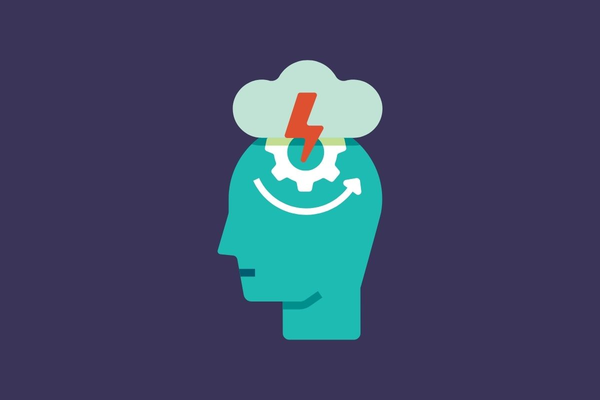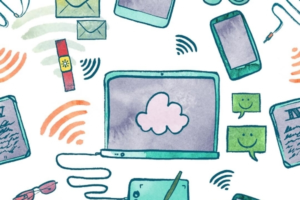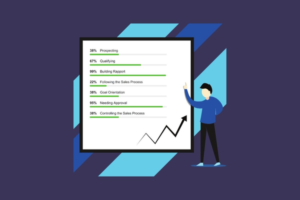What can your DISC Assessment tell you about how you respond to and deal with stress?
Learn what may cause stress for your DISC Style, how you recognise when you are under stress and pick up practical tips to help alleviate stress.
Are you also a Team Leader? The webinar will help you identify when your employees are under stress and give you ways to help them deal with stress.
Use the webinar to help you recognise your signs of stress and how to stop stressing out!
Today, we will be touching on a topic everyone can relate to, stress. We will look at how we can relate the Extended DISC® model in relation to stress in both our personal and work environments. We’ll also look at how we can use the Extended DISC® model to alleviate stress.
We all experience pressure and stress. It’s almost impossible to live an entirely stress-free life, but we can look at some strategies to help us deal with stress. We can reduce stress by feeling that we have more control of the situation around us. We will look at how we react to different pressures around us and the consequences of our reactions. In reality, the only thing we control is ourselves. We can’t control others behaviours, but we can control our own.
I’m sure all of us have experienced stress or pressure over the past few years. Stress is not a bad thing. We often perceive stress negatively, but some of us need a bit of stress or pressure to motivate us. I know I need a bit of stress to motivate me. Whether it’s all I need to sell an idea to a team or prepare training material, I need a bit of stress or pressure to motivate me. Typically when we are under stress, we’re at our best. When we experience too much stress for a long time, this may have a detrimental impact on our ability to perform or how we feel.
We will look at the causes of stress and how they are different from one person to another because of who we are. Because we are all different, we will look at what tends to cause us, and the other DISC personality types stress. Next, we’ll look at how we react to stress. If we know how we respond differently under pressure and understand why we react the way we do, it’s easier for us to be in control as we can modify our behaviour. We can make a conscious effort and intelligent decisions about what to do under stress or pressure. We will look at alleviators of stress. There are unique ways for each behavioural style to alleviate stress, but there are some everyday things we can all do: exercise, a glass of wine, a walk on the beach, or practising mindfulness. We will look at how to reduce stress via different alleviators for the different DISC styles. Remember, not all stress is a bad thing as long as we can control it. I’m sure we’ve been in situations where we want to lose it either at someone in our personal or work life. However, as long as we can positively control is stress is a good thing.
DISC Profile and Stress
Let’s revisit the Extended DISC® model. Task-orientated people fall under the top part of the quadrant. Task-orientated people have their ‘to-do’ lists. They are very goal orientated and want to get things done. Task-oriented people thrive on a challenge. Moving down to the bottom part of the quadrant is where you locate your people-orientated people. They consider human effects and how things affect people. They will make decisions that consider human aspects, people’s feelings and emotions. Now, let’s look at introverted people on the left-hand side of the quadrant or extroverted people on the right-hand side. We all have a little bit of these styles within us. We can adjust or modify our behaviour to suit people or situations. Still, we will revert to our dominant behavioural style under stress or pressure as this is the most comfortable style for us.
Unfortunately, when things go wrong, we tend to blow up and react in stressful situations. You would now have worked out, especially with family members, you cannot control their behaviour or the situation, but you can influence or even diffuse what goes on. We can’t control certain situations, but we can control how we react. Think of someone you know who sits on the quadrant? Can you relate them to one of the four primary DISC Personality Types?
The D Personality Type stands for Dominance. Think of someone who likes to lead, is competitive and not afraid to take risks. Like all styles, some of these are strengths, while other behaviours may be a little bit challenging for them, especially when they’re under stress or pressure. They’re going to become too much of those strengths listed before. So, they might become more blunt or more assertive.
The I Personality Type stands for Influence. I styles can walk into a room and meet friends. They are social butterflies. They can walk in a room with smiles on their faces, and they make lunch dates and other networking events. They are very charismatic and energetic. These people are generally well-liked. However, under stress or pressure, they can become too much of that behavioural style. They can become too chatty, seeking out informal networks. They move too quickly, and they will start to lose detail.
The S Personality Type stands for Steadiness. These are the most cool, calm and collected of the four behavioural styles. S styles don’t have the emotional highs and lows as they are very stable. They are fantastic listeners and very logical. They’re not your job hoppers because they like familiar stable environments and routines, and they don’t like new challenges being thrown at them quickly. These people make long-lasting friendships, and they will have a smaller selection of friends.
The C Personality Type stands for Compliance. The C’s are straight and narrow and very correct. They are perfectionists. These guys dot the I’s and cross the T’s and need lots of information to make decisions.
I’m sure you can relate to one of these styles. Identifying a person’s behavioural style is all about the behaviours they exhibit, why they react the way they do in relation to your behaviour, and how you exhibit them. It is about how you take a predominant behavioural style, infuse it into a situation, and say to yourself, how can I modify my behaviours to relate better or communicate a bit better with peers or family members.
Extended DISC® Diamond Chart
The Extended diamond chart is a visual module to observe where the DISC personality types on the quadrant. Most people are a combination of two traits, and some of us are a combination of three. Typically less than 0.4% are what we call 100% of a trait. For example, if you think about what 100% D style would be like, they would be very blunt, demanding, aggressive and appear as though they are at the top of the food chain. They don’t want to be anybody else and, most importantly, deal with anyone else. However, most of us are a combination between styles, such as DI or IS and so forth. This is what using the Extended DISC® diamond is all about if not only plotting where a person’s natural behavioural style is on the diamond but also where they feel they need to adjust to be successful in their current role. The key is to understand the model and what it means concerning where we naturally sit on the diamond and where we need to move or flex to deal with different situations.
What is Stress?
Stress is your body’s way of responding to any fear. When you sense danger, whether it’s real or imagined, your bodies defences kick into gear and a rapid automatic reaction known as the fight-or-flight mode or the stress response mode. The situations and pressure that cause stress are known as stressors. We usually think of stressors as being negative such as an exhausting work schedule or a rocky relationship. However, anything that puts high demands on us can be stressful. For example, if we look at the person’s results on screen (7:10), we can identify that losing their freedom can cause a significant amount of stress. If this person were to lose freedom in their job or personal life, the fight-or-flight mode, also known as the stress response, would kick into gear. I recommend referring back to the standard behavioural analysis, or the grow and develop an assessment to identify the most likely factors to generate stress for you.
Is Stress Bad?
Remember why stress isn’t always bad, as I mentioned earlier in the webinar, and that small doses can help people perform under pressure and motivate them to do their best.
What Happens to Us Under Stress?
When we are under stress or pressure, we revert to our natural behavioural style our hardwired behaviours. The reason we do this is that it takes energy to modify our behaviour. For example, I’m a high I style, and when I have to focus on a lot of details or repetitive routines by the end of the day, I’m worn out. That same behaviour happens to everyone when having to move away from their natural behaviours. Stress takes energy. It can be draining, so we revert to our natural behavioural style to compensate for the strain in energy. There is nothing wrong with this, except we lose some of our ability to modify our behaviours. Under stress or pressure, we become too much of ourselves, and we exhibit the ‘too’ effect. For example, if you’re a high D style, you may become too aggressive or too competitive. If you are a high I style, you might become too talkative and start to seek attention everywhere. If you are a high S style, you might become too laid-back or too withdrawn. Finally, if you are a C style, you may become too analytical and seek more information that makes you feel comfortable when making decisions.
As stress and pressure increase, so can the negative aspects of our behaviour. Think about a family member or co-worker under stress or pressure they might become too much of themselves. They may overuse their strengths, and they become more pronounced. These can become clear weaknesses. If you are self-aware, you will be more aware of these weaknesses and how they become apparent in your behaviour under stress or pressure.
How do we React to Stress?
Like anything, we all have our strengths and development areas. Sometimes if we overuse our strengths, they can become our weaknesses. Stress uses large amounts of energy, so we revert to our natural behavioural style to compensate for the strain. The Overuse Diamond found in the Grow and Develop Assessment includes generic texts about how an individual may behave when under stress or pressure or simply when they’re overusing or emphasising their natural strengths. Refer to the Overuse Diamond to identify how you may react in pressure situations or view results on-screen against this diamond using Open Preview in your FinxS account. For example, on the diamond on-screen (10:00), we can see that the person is a high I style. Looking at the text, we can see they have strong emotional opinions and may tend to focus too much on the opinion of others under stress or pressure.
How to Identify if you are Under Stress
Although small amounts of stress can help motivate you, your body and mind may pay the price when you’re constantly running in stress mode. Your teammates and your family can also be affected by your reactions to pressure situations. As managers, co-workers and friends, we can begin to identify the signs of stress in others. Recognising the signs help us better support and assist them and therefore improves the work environment. The overuse diamond is an excellent resource as it provides a basic overview of how each style may appear if they are under a significant amount of stress. We also have the opportunity to delve deeper into our signs of stress through the stress job templates.
There are 31 signs of stress under the behavioural competencies in our system. Therefore the most significant causes of stress will be unique to each person. As a high I style, we can see that our example person becomes overly concerned about relationships and will have strong emotional opinions under large amounts of stress. An awareness of the significant factors is critical and gaining better control of stressful situations. We often fail to realise that our behaviour makes things worse. Once we start to feel stressed, we tend to let emotions take over, and we are less likely to think about how we should modify our behaviour to improve outcomes.
How to Better Deal with Stress
The key is self-awareness of who we are, what causes us stress, how we react to stress and how to alleviate stress. You need to know how you’re going to react under stress or pressure. I will give you an example. This morning I was trying to get two children clothed, dressed and ready for school. I’ve got two dogs that need feeding, and one of them disappears every time you go to put them away. I have chickens that need feeding and ponies that I need to let out of the stables, and this is all before work at 7:45 am. On top of this, I’ve finally coaxed the dog out from under the deck to put him away, and my son tells me he needs an article for current events that day. By the time I get to work, I’m feeling rather wound up and frazzled, and I need to walk into the office with a smile on my face. I need to step back and realise how I may react.
When you take a step back to realise how you may react rather than go into the office in a bad mood, this can positively affect you and the people around you. You can’t change an event that has already happened. Think about how you need to act with the people around you. It’s not productive to go into the office in a bad mood and say bad things or say things that aren’t related to the employees. You may even make the situation even worse. We highly recommend you revisit the development areas in your report every couple of months and look at how you may react to stress or pressure situations to decide if or what modifications to our behaviour we can improve to improve our outcomes. Sometimes we may be under a bit of stress or pressure, and we decide we’re not going to adjust our behaviour. That’s fine also but know there are some consequences to your negative behaviour.
The last thing is to think before we act, especially when around people that are important to us. Our co-workers, family members, and colleagues with whom you are the most comfortable are usually those who take the brunt of our lows. We are at our worst and best with people we know and love. If you frequently find yourself feeling frazzled and overwhelmed, it’s time to take action and bring your nervous system back into balance. You can protect yourself and improve how you think and feel by learning how to alleviate stress. In our first example, a significant cause of stress for an individual was losing their freedom. To mitigate this cause of stress, the manager or team members could give them more room to solve problems independently. The stress release job templates can help you learn some practical tips for alleviating stress based on DISC styles.
DISC Profile Types Under Stress
D DISC Style
The D styles want to be in charge of their destiny. They make their own choices, and they want to be in control. They experience stress when their freedom is taken away from them. When they lose control and cannot make decisions, they become too aggressive or blunt. They have the ‘too’ effect meaning they say things that may be hurtful. I’m sure we all have worked with a high D style under stress, and we know they say things they don’t mean. It feels good for them at the moment to release the tension by making a blunt comment, but they do not often think about how it’s going to motivate that employee in the long run. They’re not going to be motivated. They’re going to be under stress, and they take the stress to their co-workers, and productivity will decrease. It would help if you remembered the long term goal will hurt the most from a short outburst.
To combat this, think before you act. Count to 10 to alleviate stress, stop focusing on the short term goals and look at the long term goals and what you are trying to achieve. D styles can be very vocal, loud and abrupt. They will blow their top, and they are not in control. When they have an outburst, it’s over for a D style. They’ve temporarily released the stress, but the damage is done as it will take a lot longer for employees to recover from the D’s explosion.
I DISC Style
When someone snaps at the I style, they take it very personally. I Styles want to be liked. They want to be popular. So when they are verbally attacked they take it personally. They become really over caring about relationships and seek popularity. They even develop strong opinions, which they will defend blindly and become emotional. Those who are not an I style find it very difficult to understand why they react the way they do. These behaviours may appear that they are not acting rationally and they are not making sense. To alleviate stress, allow them to interact with people, meet people, and reconnect with other relationships. You will then reduce the stress of an I style.
S DISC Style
A significant cause of stress for an S style is an unexpected change such as a change in the broader environment, change in the workplace, or moving job roles. Things do happen unexpectedly, and S styles like structure and routine. So, help an S by giving them the support they need in times of change by answering the ‘how’ questions such as “how will we do it” or how it will impact them. When the S style gets the ‘how’ questions answered, they start to feel less stressed.
C DISC Style
Finally, the C style likes structure, so unstructured situations with no clear instructions, information or even a chaotic environment will cause them stress. Unlike the other task-orientated style, D, who seems to like a little bit of chaos. The C style wants the structure, and when that’s not there, they will become uncomfortable. They need the ‘why’ questions answered, such as ‘why are we doing this?’ Give them some data to run their analysis, run the numbers, and begin to feel less stressed. The C styles under pressure become more withdrawn and introverted. They will seem to disappear. So when you see, or not a see a C style, slowly withdraw, it is a good indication that this person is under pressure or stress and the situation needs to be addressed.
When pressure mounts up, it becomes too much under stress. How we lose our cool depends on what style we are. For example, the D styles tend to yell and are usually very verbal. We typically lose our with the people we love the most. If you have had a bad day and go to a networking event or a social event, you are generally nice. You put your best foot forward because it’s socially acceptable. But often, when we go home, and someone irritates us, we tend to overreact. We say something to our family members or child, and we react badly. We need to be aware not to take stress or pressure home. Think about how you can apply your best behaviour to the ones who you care about most. If you go home and use your worst behaviour, your day won’t get any better or will the day around you. If you apply your worst behaviour, you will become more stressed, feel guilty about how you reacted, and have to do a little repair work to fix the damage. Ultimately we cannot control or modify other people’s behaviours. We can only change ourselves.
Extended DISC® will help us be more mindful of how we interact with others and our own stress levels. The big takeaway is to be more self-aware and understand what will cause your DISC style stress to give you more control over pressure. If you know your disc style and you’re able to manage it. Be your best behaviour with the people you love most.







